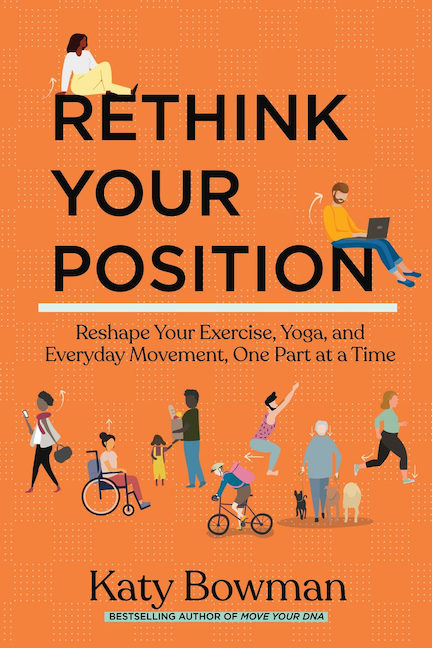
By Katy Bowman
Propriometrics Press, 2023
296 pages, paperback, $19.95
“I think we need to celebrate what we can do and what we’ve been able to do while also acknowledging that we can improve. Investing energy in learning about and changing our own movement patterns for the better is worth it.” – Katy Bowman
Katy Bowman’s 2023 book “Rethink Your Position” offers tangible anecdotes on movement modifications for your body that allow for small, incremental and meaningful changes that you’ll feel. Bowman, a bestselling author, speaker and biomechanist, teaches movement globally and speaks about sedentarism and movement ecology.
The University of Georgia’s Odum School of Ecology defines movement ecology as the study of how organisms move within their environments or ecosystems, such as during daily activities. Sedentarism refers to the many “activities” commonly associated with the word sedentary — sitting, lying down, sleeping. While Bowman’s audience tends towards those with more sedentary lifestyles than farmers, this book is for anybody with a body. It provides easy-to-follow movement descriptions and explanations of how the body works, followed by ways to improve the movement or stretches to help gain mobility if you are experiencing limitations.
If you’re interested in making some improvements to your movement health and wellness, but you’re already moving all day, don’t have time or access to a gym, or don’t know where to start, “Rethink Your Position” offers movement considerations for every body part. Bowman actively encourages you to put the book down and move! Are you standing up straight? Do your ribs open up (flare) at the bottom? Do you stand on the balls of your feet? Don’t worry, Bowman gives immediate and actionable movement self-assessments followed by strategies for improvement.
Even for active people, “Rethink Your Position” builds awareness of self and how you move or don’t move. Bowman embraces reality in her examples of daily life experiences and addresses the reader without judgment of their current movement status. A strategy plan might include, in no particular order, small corrective exercises, everyday alignment adjustments, stacking movement into activities, and walking more.
If you have a body that you want to continue to use, you need movement, and to keep movement, Bowman says, you need to practice, which means you need to pay attention. The positions we choose tend to be in response to our environment. In farming, rain, hot and cold weather, wind, bugs, row spacing for harvest, workspace limitations and terrain are concerns. With the varied ways to position your body, the reality is that there is no single “correct” position or movement pattern.
“We need to be concerned with the longer game,” writes Bowman. To get there, movement self-advocacy for health and wellness in daily life, on and off the farm, can increase longevity and influence farm culture for the long haul.
Cynthia Flores, Labor-Movement, LLC
